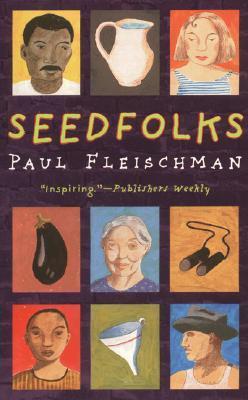Seedfolks Book Summary
TL;DR
Seedfolks is a poignant tale of community and connection, narrated by thirteen diverse characters who are drawn together by a community garden in Cleveland, ignited by a young Vietnamese girl's simple act of planting seeds.
What is Seedfolks about
Seedfolks, authored by Paul Fleischman and illustrated by Judy Pedersen, explores the powerful impact of a community garden on a diverse urban neighborhood. The story begins when Kim, a nine-year-old Vietnamese girl, plants six lima beans in a vacant lot to honor her deceased father. This seemingly small act sparks a transformation, inviting a colorful array of characters, including a Romanian woman, a school janitor, a Guatemalan family, and others, each with their own perspectives and backgrounds. As the garden grows, so does the sense of community and connection among the residents, showcasing themes of diversity, hope, and the human spirit. The book is notable for its unique narrative structure, with each chapter presenting the voice of a different character, making it an engaging read for both children and adults.
Seedfolks 5 Key Takeaways
Diversity of Voices
The narrative features thirteen distinct characters, each representing different cultural backgrounds and life experiences, providing a rich tapestry that highlights the importance of community and shared experiences.
Thematic Exploration of Community
At its core, Seedfolks is about the connections formed within a community, as individual stories intertwine through the common goal of nurturing a garden, symbolizing hope and resilience.
Symbolism of Gardening
The act of gardening serves as a powerful metaphor for growth, both personal and communal, reflecting how individual actions can lead to broader societal changes.
Engagement with Urban Life
Set in a vacant lot in Cleveland, the book addresses urban challenges and the capacity for change within neglected spaces, emphasizing the potential for beauty and transformation in urban environments.
Emotional Resonance
Each character’s story resonates emotionally, revealing personal struggles, dreams, and the impact of community support, making the narrative relatable and poignant.
Top Seedfolks Quotes
- Planting a seed is like planting a dream; it begins with hope and the possibility of something beautiful.
- In a world of differences, we found common ground in the soil we cultivated together.
Who should read Seedfolks?
Seedfolks is ideal for readers of all ages, particularly those interested in themes of community, diversity, and social change. It appeals to educators seeking to teach tolerance and cooperation, as well as urban gardeners and anyone looking for inspiration in communal efforts.
Seedfolks Best Reviews
- A beautiful story that captures the heart of community building and the power of planting seeds—both literal and metaphorical. - School Library Journal
- Fleischman's use of multiple voices creates a mosaic of perspectives that enriches the narrative, making Seedfolks a powerful read for all ages. - Booklist
People also liked these summaries
Seedfolks FAQs
What age group is Seedfolks suitable for?
Seedfolks is generally recommended for grades 5-8, though its themes resonate with readers of all ages. Its accessible language makes it suitable for younger readers, yet it offers depth that adults can appreciate.
Is Seedfolks based on real people?
Yes, Paul Fleischman has indicated that some characters are inspired by real-life individuals, reflecting genuine experiences and diverse backgrounds to create a more authentic narrative.
